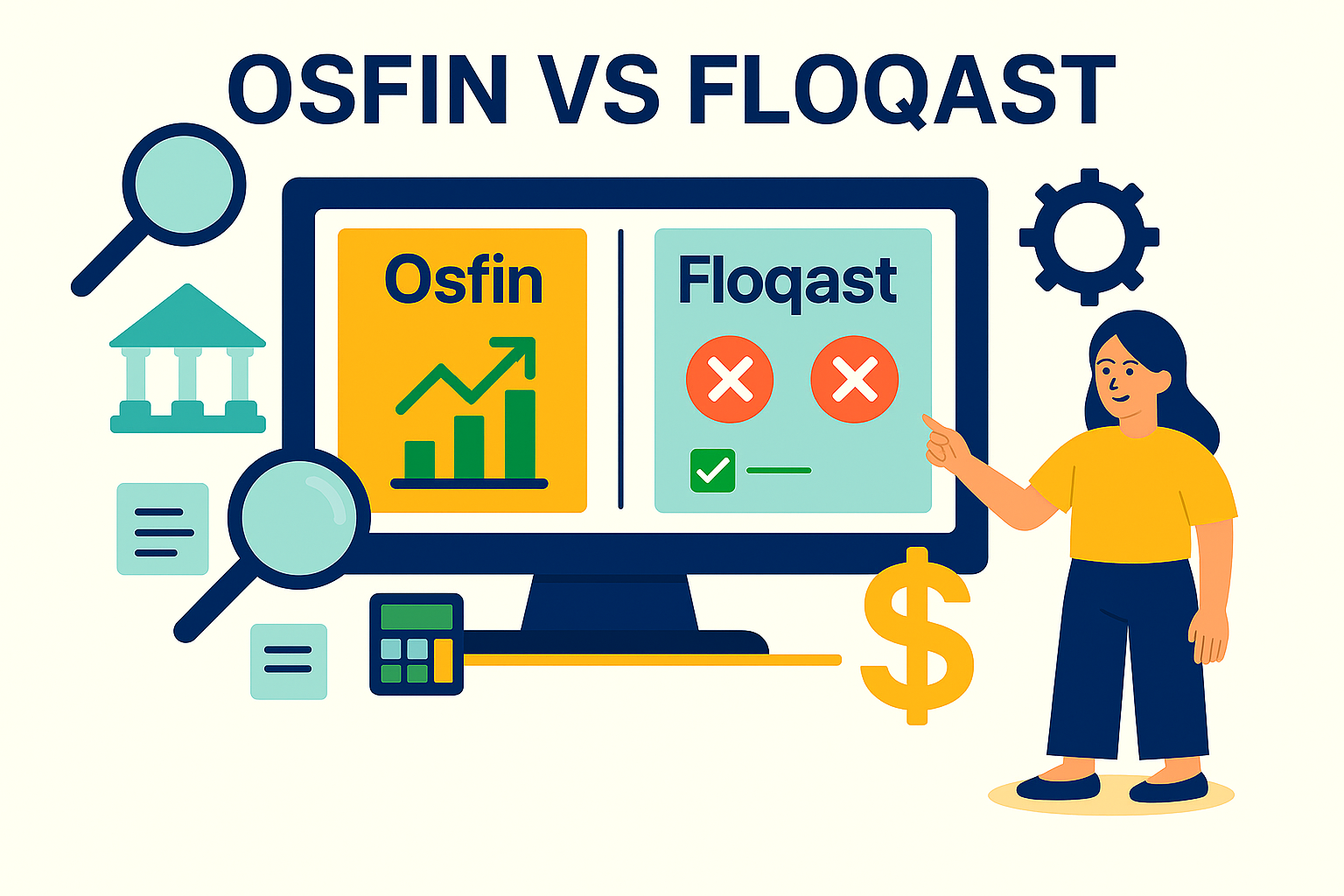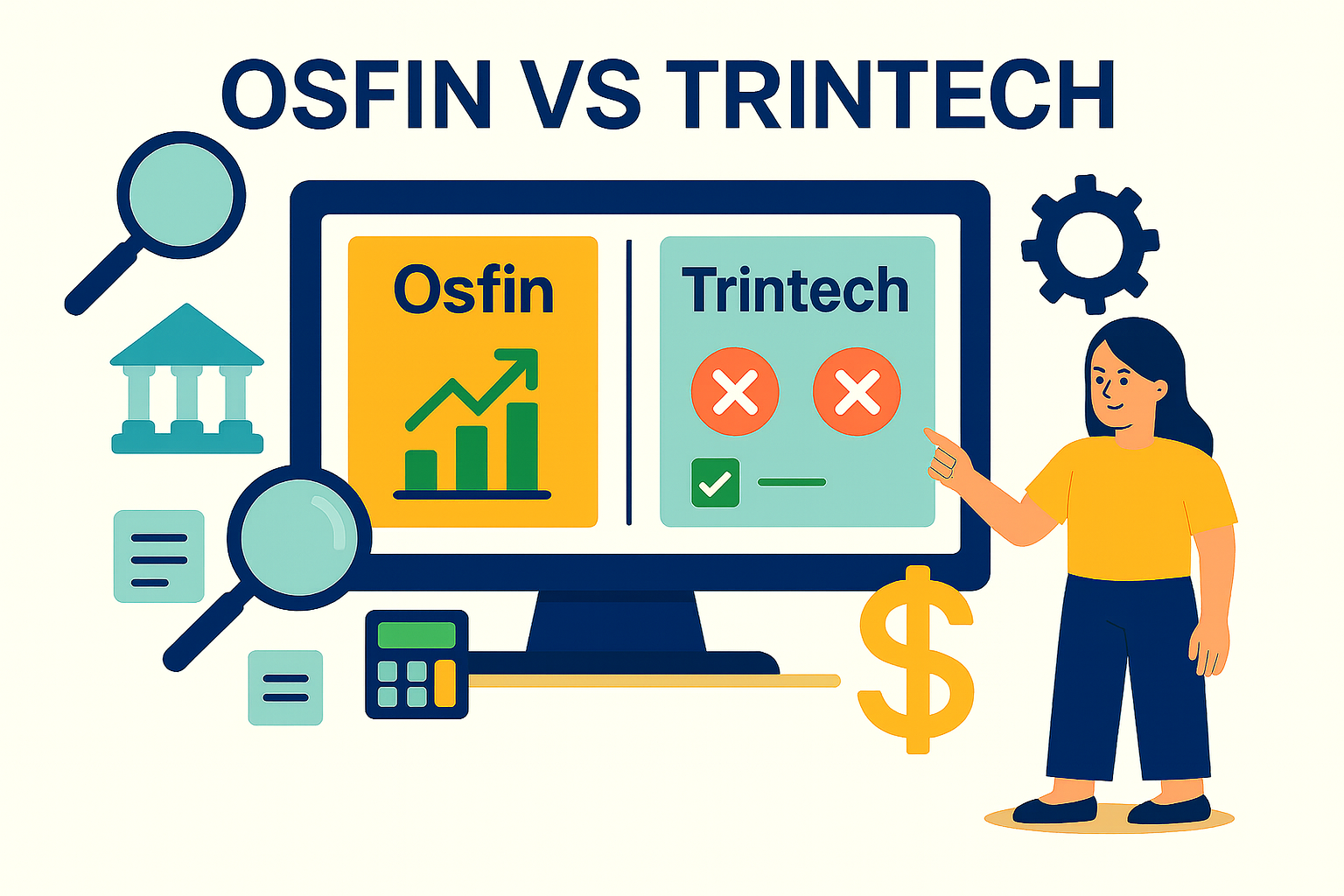Why Real-Time Payments Need Real-Time Reconciliation
As payments get faster, the pressure to manage and reconcile them grows just as fast. Real-time payment (RTP) systems are becoming a core part of today’s financial infrastructure. They allow money to move quickly, at any hour, across platforms and institutions.
Still, many financial institutions rely on outdated or manual reconciliation processes that aren’t designed to handle the speed of RTPs. As a result, there is a gap between when payments are made and when they’re verified. Without real-time reconciliation, the speed, transparency, and liquidity control that RTPs come with can quickly become meaningless.
This article explores how real-time payment systems work, the benefits and risks, and why reliable reconciliation is essential for managing them. Let’s start by defining what real-time payments mean.
What this blog covers:
- What real-time payments are and how they differ from traditional batch systems
- How real-time payments work and their global adoption
- Key benefits: instant settlement, 24/7 availability, improved liquidity
- Key risks and challenges: fraud, irreversibility, infrastructure demands
- Why real-time reconciliation is critical alongside real-time payments
- How Osfin.ai enables real-time reconciliation for high-volume payments
What are Real-time Payments?
Real-time payments, also known as “faster” or “instant” payments, are financial transactions that are initiated and settled almost instantly. These RTPs can occur 24/7, including outside business hours, on weekends, or holidays – periods where traditional payment systems are often nonfunctional. With RTPs, users experience fast transaction speeds, lower risks of reversals, and more data on the transaction.
For now, real-time payments are primarily limited to domestic and regional transactions; however, international developments are underway.
In the next section, let’s take a closer look at how a real-time payment actually works.
How do Real-time Payments Work?
RTPs offer near instant fund transfer electronically. How does this work? Unlike traditional payment systems that rely on delayed batch processing, RTP systems complete the entire payment lifecycle, from initiation to settlement, in as short a time as possible. A typical RTP flow involves the following:
- Initiation: The payer initiates a transaction through a bank portal or mobile app.
- Authentication: The bank validates identity and checks to see if funds are available in the payer’s account. If these factors are approved, the transaction will be authorized.
- Transaction Processing: After authorizing the transaction, the bank sends the payment through an RTP system.
- Notification: Both parties receive immediate confirmation once the real-time payment is received.
- Settlement: Funds are instantly credited to the recipient’s account from the payer’s account.
It’s important to note that RTP supports only push (credit) payments, and not pull (debit) payments. This means that the payer initiates the transaction, and eliminates risks like insufficient funds or payment reversal.
Now, we’ll look at how to enable real-time payments within your business infrastructure.
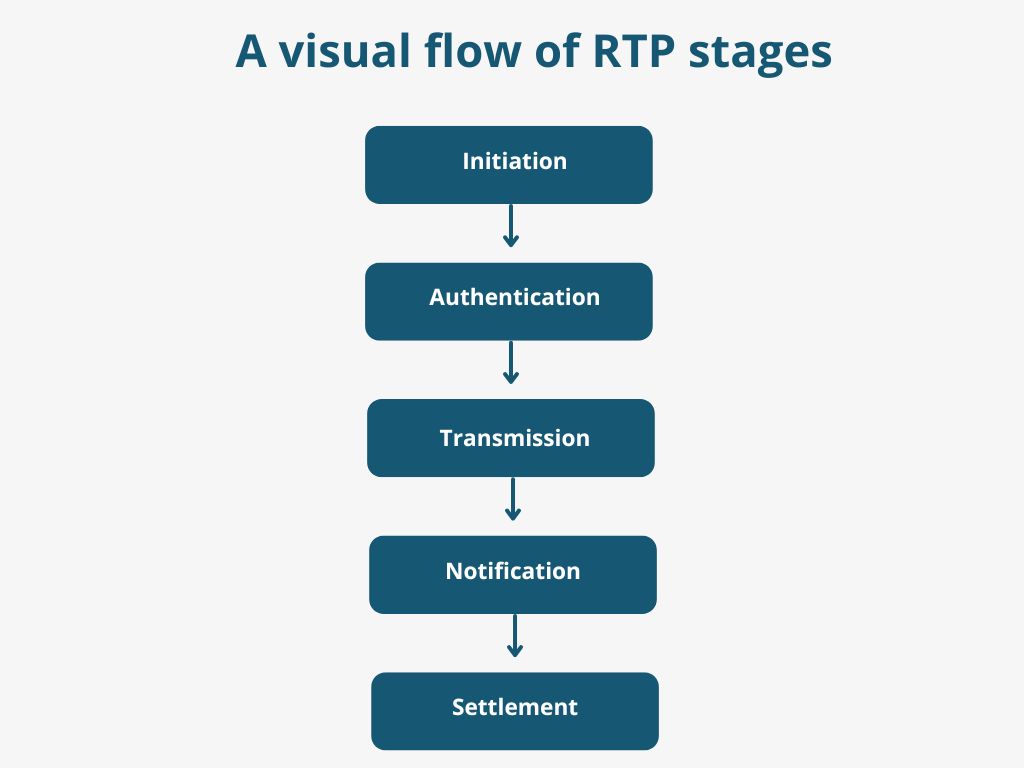
How to Enable Real-time Payments
Setting up real-time payments means, preparing your infrastructure to connect with real-time rails, and then automating your workflows.
For businesses, that means integrating with banks or payment partners through secure channels like APIs or SFTP. Another requirement is to support modern messaging formats like ISO 20022 XML or JSON. These let more data-dense transaction information flow between different systems.
For financial institutions, enabling RTP starts with maintaining real-time connectivity. It also requires investing in systems that are built for 24/7 availability. Processes like fraud checks, settlement processing, and exception handling need to be automated. Without automation, manual processes can do more harm than help.

{{banner1}}
Real-time Payment Networks
Real-time payments have gained global popularity. Many countries have their own implementations of RTP systems, and each real-time payment system is tailored to its local economy. They all share the essence of instant fund transfer and settlement.
Here is a short overview of key real-time payment networks around the world.
{{banner2.1}}
Benefits of Real-Time Payments
Real-time payments are a near necessity in today’s digital financial landscape. Businesses that adopt RTP can improve greatly in managing their liquidity and increasing the efficiency of their financial operations. Here’s how:
- Cash Flow Optimization:
Funds settle instantly, improving working capital efficiency. This lets businesses access cash faster.
- Better Customer Experience:
Faster payouts increase trust in platforms like marketplaces and insurance. Real-time payments reduce any anxiety around payments and improve user satisfaction.
- Operational Productivity:
RTPs eliminate any delays, the need for manual batch processing, and cut-off time issues. Consequently, businesses as well as financial institutions can streamline their operations and reduce reconciliation workloads overall.
- Transaction Certainty:
Confirmations for all transactions are sent in real-time. This increased visibility has positive consequences for tracking transactions and auditing requirements.
- Detailed Transaction Data:
Transactions can include metadata such as invoice IDs, purchase references, or payment context. This is ideal for reporting and financial decision-making.
These benefits are transformative, as evidenced by the increasing number of businesses and financial institutions adopting RTP networks. This is true, however, only if supported by reconciliation systems that can keep up.
In the next section, we’ll explore the kinds of risks real-time payments can pose when their reconciliation is slow.
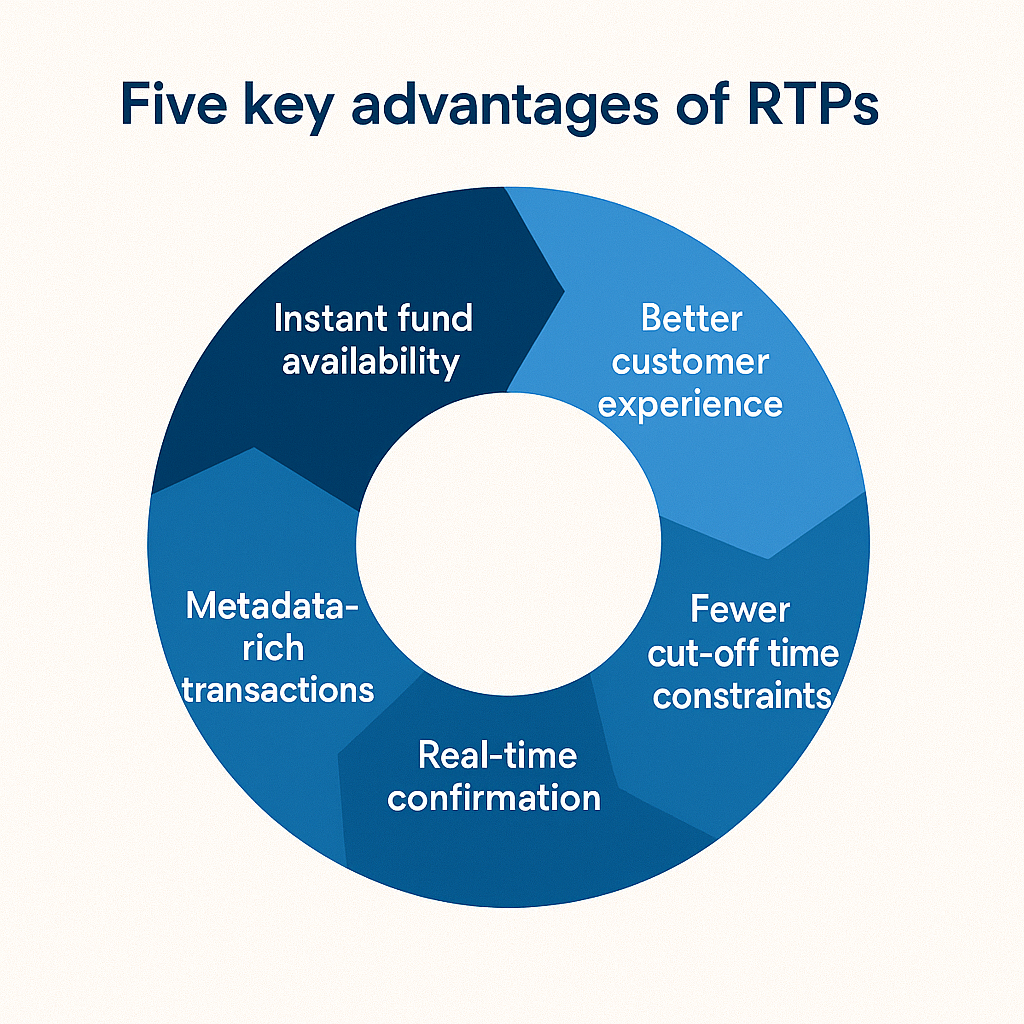
{{banner1.1}}
Key Risks and Challenges Associated with real-time Payments
Despite the advantages outlined above, real-time payments also introduce a new set of challenges. These risks need smarter, automated reconciliation processes to ensure financial accuracy for any institution. Here’s an overview:
1. Fraud Risks
First, real-time payments leave no room for manual checks. Without some buffering time, and without good monitoring tools in place, fraudulent transactions can go through before they are detected.
2. Irreversibility
Once a real-time payment goes through, it can’t be reversed. That means even small errors can become costly. Any dispute and correction processes have to be made airtight.
3. Infrastructure requirements
Real-time payments require systems that can operate 24/7, process data instantly, and stay consistently online.
Many older platforms were built for slower, batch-based payments and can’t keep up. This makes investing into newer, better technical infrastructure very important.
4. Reconciliation Complexity
When a high volume of real-time payments occur close to each other, the data can become overwhelming quickly. Without real-time reconciliation, finance teams face challenges like backlogs, missed entries, and poor understanding of cash positions.
So how do businesses or financial institutions navigate this complexity, while retaining confidence? With good reconciliation practices – which we will look at in the next section.
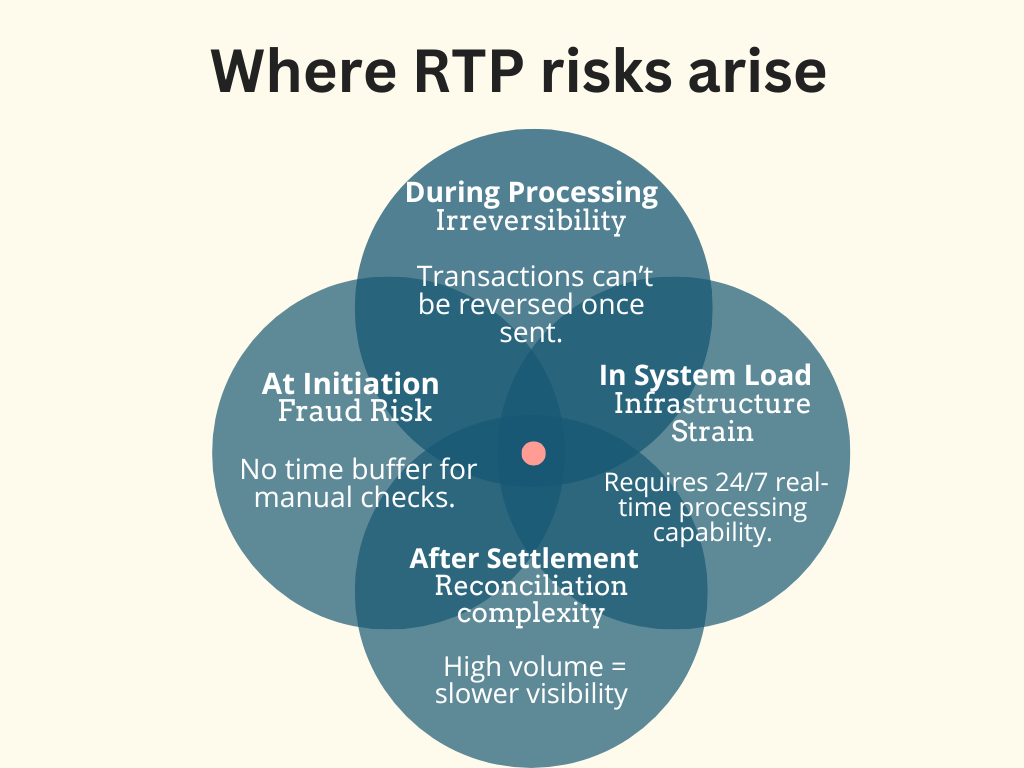
{{banner3}}
Why Real-Time Reconciliation is Non-Negotiable
Real-time payments introduce a parallel need for good, reliable, and real-time reconciliation.
Without reconciliation systems that can process, match, and validate transactions as fast as possible, you risk falling behind. Any delays or mismatches can all undo the benefits RTP provides.
This makes it important to have strong reconciliation practices built into your workflow, ready to deal with real-time transactions. The good news is that there are tools and platforms in the market that come prepared for such a task.
How Osfin Enables Real-Time Reconciliation
Osfin.ai is built to handle the reconciliation challenges that real-time payment systems can create. Osfin focuses on validating, matching, and securing them as fast as possible.
With direct integrations to banks, ERPs, and real-time payment networks, Osfin automates the full reconciliation lifecycle. It matches transactions across systems with 100% accuracy. When dealing with an increasing volume of RTPs, Osfin offers features like anomaly detection, smart classification, and rule-based workflows, helping you tackle them effectively.
Osfin ensures that your financial data is always accurate, compliant, and actionable. Osfin.ai enables real-time reconciliation with a high-speed matching engine that processes up to 30 million records in 15 minutes, using AI-driven logic to match entries across ACH files, SWIFT messages, ISO formats, and custom payloads. It supports auto-reconciliation of payment gateway reports, detecting mismatches in fees, taxes, and settlements. Osfin handles transaction-level matching across ledgers, clearing files, ERP outputs, and bank statements, regardless of file type: Excel, CSV, JSON, XML, MT940, ISO 20022, or others.
With real-time exception tagging, Osfin classifies mismatches, assigns root causes, and routes them to the right team using smart workflowsOsfin offers real-time dashboards, a no-code rule builder, and role-based access control. All data is protected with 256-bit SSL encryption, 2FA, and full SOC 2, ISO 27001, PCI DSS, and GDPR compliance. With 170+ pre-built connectors, multi-system aggregation, fast setup, audit-ready logs, and ongoing expert support, Osfin transforms reconciliation across banks, credit unions, and fintechs.
{{banner3.1}}
FAQs
1. What is considered a real-time payment?
A real-time payment refers to any transaction where funds are instantly transferred between accounts and made available to the recipient within seconds. Real-time payments also send out notifications to both payer and payee as part of the processing experience.
2. How do I know when a real-time payment is received?
When a real-time payment is received, both payer and recipient get an immediate notification, usually via SMS, email, or in-app alert. The transaction is final and the funds are instantly available for use by the recipient.
3. What are the differences between RTP and ACH?
RTP is a real-time payment system that settles instantly and supports only push (credit) payments. ACH can be used for both credits and debits, but typically takes 1–3 days to process and is not available 24/7.
4. Can real-time payments be reversed?
No, real-time payments are final and cannot be reversed once processed. This highlights the need for real-time reconciliation tools that help prevent errors and fraud before a transaction is executed.
5. Are there any transaction limits for real-time payments?
Yes, real-time payment systems usually come with transaction limits, which are defined by banks or local regulators. These limits often depend on factors like the specific RTP platform being used, whether the sender is an individual or a business, and the rules set by different financial authorities.
